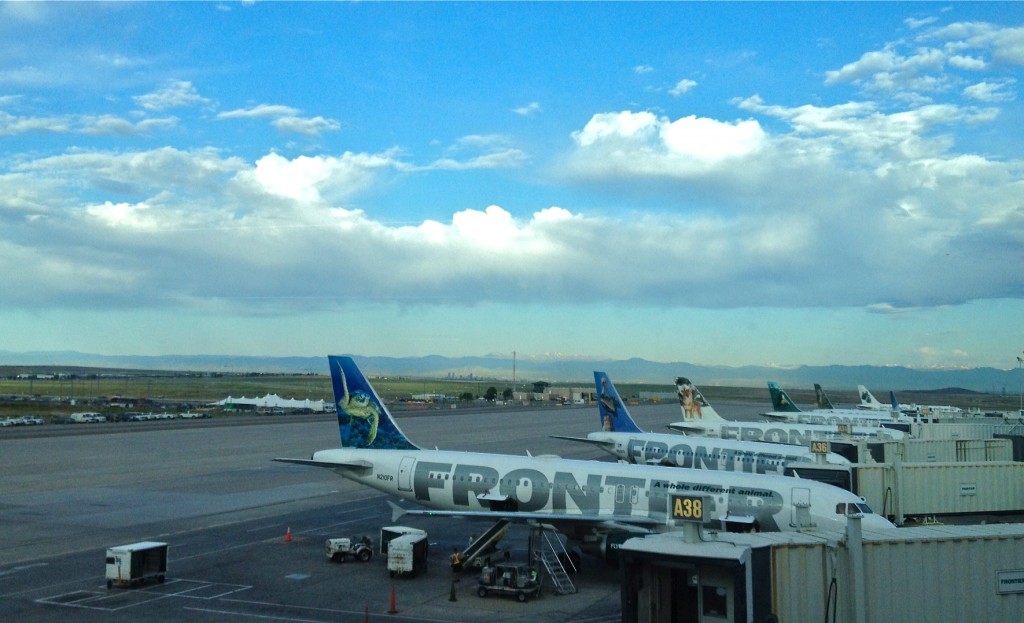I’m a regular at Denver International Airport. I come and go through this airport a few times each month, learned it’s ins and outs, and I often view it through my environmental tinted eyes. Recycling and waste management, fuel storage and use, spill response, deicing, aircraft maintenance, compliance, permits, it’s facility environmental compliance on a massive scale and I wanted to know more about the environmental professionals who take care of it.
Reaching out through DIA’s Media Relations Director, I was able to interview the airport’s new Director of Environmental Programs, Scott Morrissey, about what it takes to keep the airport environmentally healthy, his life as an environmental professional, and what’s new with the South Terminal Redevelopment Program
TNEP: I can imagine most of the environmental professional’s work at DIA goes unnoticed to the flying public. At the same time, I’d think it’s important for DIA to outwardly show a commitment to the environment; for example, the placement of the solar array. Is it important for DIA to promote your work to the public?
Scott Morrissey (SM): It’s true that a lot of DIA’s environmental work is behind-the-scenes, but we take great pride in demonstrating our environmental commitment to our passengers and business partners. Rather than only discussing regulatory compliance when something goes wrong, DIA has a created an Environmental Management System that helps to manage our regulatory responsibilities in a systematic and comprehensive way. This gives us the opportunity to proactively communicate our compliance record to all stakeholders and promote how we ensure continuous improvement. Ultimately, that’s a lesson that we want to share, so everyone knows that DIA is a facility that manages our environment in a responsible way. DIA was originally built with sustainability in mind – from the Aircraft Deicing Fluid collection infrastructure to daylight in the terminal – and we go out of our way to provide tours and presentations to other environmental professionals to help tell our story.
TNEP: What are the biggest environmental challenges at DIA? Is it the day-to-day operations (waste management, compliance, permits, etc.), or is it the large one-time projects?
SM: I like to think of DIA as a “city within a city” – with our thousands of employees and 50 million-plus passengers, we tend to have the same types of environmental issues that any large city would. We need to divert waste from the landfill, reduce energy use, conserve water, and improve water quality, and ultimately the large projects are just an opportunity to advance our underlying goals in an efficient way. I wouldn’t say that either large projects or day-to-day operations are more challenging – since all of our work is oriented towards continuous environmental improvement, we try to investigate all cost-effective opportunities that will help achieve our goals.
TNEP: Personally, what part of managing the environment in the airline industry is the most passionate for you and/or the staff?
SM: I really appreciate the opportunities for direct implementation that come from working at the airport. All environmental jobs are rewarding in their own way, but I appreciate the fact that the results of our jobs can be so tangible. DIA is a 53-square mile facility that is Colorado’s largest economic engine – ultimately our role is to protect the environment of those 53 square miles so that we can be good neighbors and ensure that our passengers and the public can continue to benefit from having a world-class airport in Denver.
TNEP: Does the passion for your work come from how you live your life, vice versa, or are your work and life connected?
SM: I think the motivation for most environmental professionals comes from a personal place. I didn’t grow up in Colorado, but moved here for the same reason so many of us did – to have opportunities to enjoy the outdoors that aren’t available in other parts of the country. That attitude helps to frame my work life, by providing a constant reminder of why the work we do at DIA is so important. To play a small part in preserving the environment of the place we call home is an exciting opportunity whether you work in the environmental field or not.
TNEP: Tell me about your interaction with flyers and co-workers who are not environmental professionals. Do they understand and appreciate your work?
SM: One of the benefits of working at an airport is that most people understand and appreciate the basics of the work we do, because they can visualize the scope of the potential environmental impacts. It’s fair to say that non-environmental professionals may not understand all of the regulatory aspects, but we generally get a lot of support on the “why,” even when folks don’t understand the “how.” Aircraft Deicing Fluid collection and recycling is a good example – DIA is an international leader in reducing the amount of fluid that is sent for treatment, which has important environmental and economic implications. We think that’s a message everyone can appreciate, even if they don’t understand the nuances of industrial stormwater regulations.
TNEP: Are there any new or unique environmental projects or opportunities being taken with the light rail/terminal expansion project?
SM: The entire South Terminal Redevelopment Program (STRP) will create exciting environmental opportunities for DIA. In addition to being constructed sustainably, the three projects that make up the STRP – the hotel and conference center, the public transit center, and the public plaza – will independently help support DIA’s environmental goals. The hotel will create on-site meeting space and reduce the need to drive to do business, the public transit center will include a commuter rail station connecting the airport with downtown Denver, and the public plaza will create a new venue for programs and events.
You can learn more about DIA’s environmental management program here.


